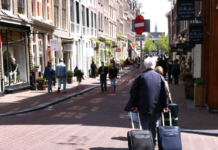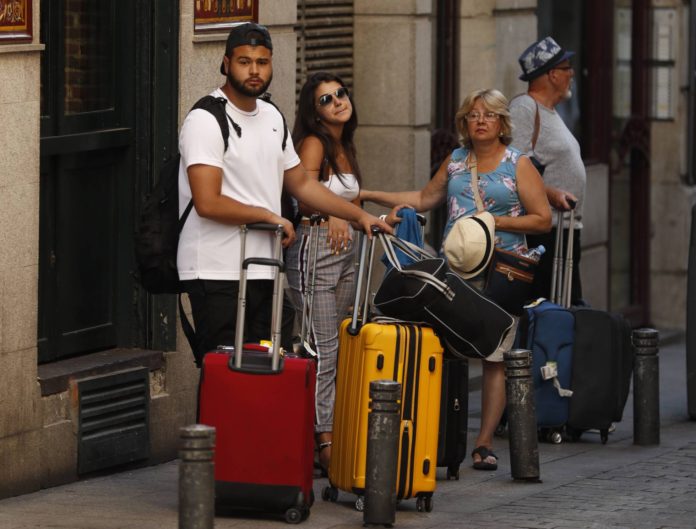The boom in tourist apartments in Madrid rented out via accommodation sites such as Airbnb is causing problems with regard to habitability, harmonious cohabitation, and safety, and is “affecting the price of housing,” causing an “astronomical rise in the price of rents” in the city center. That’s according to new regulations for the sector proposed by City Hall, and which plan to drastically limit the supply of vacation homes in the most central neighborhoods.
The plan states that the Airbnb model is causing the “expulsion of residents”
The rise in tourist apartments on offer via sites such as Airbnb and Homeaway is rapidly changing cities across the world, and as such has sparked debate over the pros and consof the model. A report published this week by Spain’s competition watchdog, the CNMC, praised the arrival of such sites, pointing out that they offer an income stream for property owners, drive down prices of vacations, and “empower” the consumer.
In contrast, the cons can be found in the new plan from Madrid City Hall, which will be up for debate until September 27, ahead of its definitive approval.
The plan, to which EL PAÍS has had access, states that the Airbnb model is causing the “expulsion of residents,” and is having an “impact on the habitability of buildings, harmonious cohabitation, the safety of residents, and the use of public spaces, and is affecting the price of housing and the growth of other economic activities.”
In order to defend “residential use” of these neighborhoods, the new plan states that tourist apartments that are rented out on a professional basis (i.e. more than three months a year) must obtain a license. And in districts in the center and another three neighboring areas, these licenses will not be granted if the apartment in question does not have an entrance that is independent from the rest of the flats in the block.
City Hall says that it is not trying to eliminate this kind of accommodation altogether
In practice, this will veto the vast majority of the current supply of tourist rentals, given that the rules will also exclude ground floor apartments that can be directly accessed from the street. When Madrid City Hall announced the plan several months ago, they forecast that this could affect 95% of apartments on offer.
City Hall says that it is not trying to eliminate this kind of accommodation altogether, and points out that apartments that are rented out for fewer than three months a year, or where just a room is offered, will not be subject to these rules. The aim, they say, is to reduce the saturation of the market and to “decentralize use” so that more apartments are offered in other areas of the city.
The draft plan argues that the center of the city is easily accessible from practically any area of the city, with four out of every five neighborhoods in the capital under half-an-hour away via public transport.
The aim is to reduce the saturation of the market and to “decentralize use” so that more apartments are offered in other areas of the city
The text describes a process by which more and more apartments are being converted into tourist rentals, thus reducing the stock of housing in the residential market and pushing up rents, as well as seeing many residents forced to leave and turning the center into a high-income zone. “This increase in real estate market prices can have significant negative impacts,” the report states, “implying a new residential class segregation.”
The draft regulations also point out that the model is having a particular effect on young people, “who traditionally have rented properties in these neighborhoods in groups.” What’s more, the text continues, this “colonization” is changing economic activity in these areas, prompting a greater focus on meeting demands of tourists.


















